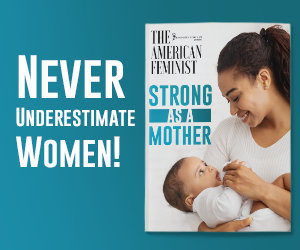In today’s Health section of the Washington Post is a story on premature babies. While the author seems to at least try a balanced approach towards addressing the issue I sensed an undercurrent of suggesting that it would be best if these babies who are born premature were “taken care of” (read: aborted or left to die) for they are likely, if they survive, to end up with a whole host of potential ailments.
Also the author debates on who should decide when not to give lifesaving procedures, even though in many cases those lifesaving procedures actually save lives (though not always the picture perfect life the author seems to suggest is the only acceptable life.)
In humans preterm birth is the birth of a baby of less than 37 weeks gestational age. In fairness to the author I will admit I’m a little biased when it comes to preemies.  One week and 14 years ago I had a niece who was due after February 14th but ended up making an early debut at 25 weeks. If she was about two ounces lighter we were told there was little they could do to help her.
One week and 14 years ago I had a niece who was due after February 14th but ended up making an early debut at 25 weeks. If she was about two ounces lighter we were told there was little they could do to help her.
The first picture I saw of her was a tiny peanut that fit into the nurse’s hand. There were fears of complications however there was no doubt this little baby was going to affect all our lives. We ended up being one of the lucky families. When she entered this world she had a 50 percent chance of survival. Today you would never know it now. She is healthy, active, quick-witted, outgoing. This was 14 years ago and the technology advances have been amazing. However that doesn’t mean high risks still don’t exist.
The number of premature babies born in the US dropped to 11.5% in 2012 – a 15-year low, according to the March of Dimes Premature Birth Report Card. The March of Dimes also points out 1 in 9 babies – 450,000 a year – are born early. Chuck Donovan of the Charlotte Lozier Institute, while promoting the legislation of banning abortions after 20 weeks, talked about the survival rates of babies born at various stages of gestation:
What do established sources say about the survival rates of babies born at various stages of gestation? These rates are a product of many factors, including the child’s weight, whether the mother took drugs to aid lung development with foreknowledge of an extremely premature birth, the proximity of the prematurely delivered baby to a neonatal intensive care unit and the technical skill of its treatment team.
The Lozier Institute will publish more on this subject in the future but here is one source, the Eunice Kennedy Shriver National Institute of Child Health and Human Development on the outcomes with babies born in the 22-25 week range in terms of gestation (note that these rates acknowledge that a range of disability occurs in babies born at these ages and that the disabilities decline in both incidence and severity as the gestational age at delivery increases).
(The Lozier Institute has more on causes of prematurity here.)
The Post author also relates a story on how prenatal diagnoses are not always accurate and sometimes you never know what to expect until the baby is born. In the author’s case the obstetrician and the hospital crew assembled to help in a birth. The next few lines made me glad my niece was not born in this hospital 14 years ago:
My team did not seem convinced. I knew they felt that they were being forced to do something that they did not agree with. They clearly felt we shouldn’t be resuscitating 23-weekers whose prospects were so grim. They knew my experience in a previous hospital had been with a patient population that was more educated and affluent. Patients at this hospital, the nurse practitioner said, “almost never agree to withdraw life support.” The NICU nurse agreed, both of them warning that if we resuscitated this baby, we were committed to treating it until the very end, whatever complex form that treatment might take.
The result of the birth in question was another happy ending – the crew had actually misdiagnosed the gestation time by two or three weeks and the baby in question was fine. However what if they were right on the timing and the baby had complications? Its chances of survival depended on medical professionals who, by the author’s inference, would have preferred the baby be left to die. However these children have as much right to live and as much love to give this world as you or I or my niece.
CLICK LIKE IF YOU’RE PRO-LIFE!
The author and I agree that parents need to be better informed on the risks of prematurity in efforts to prevent early birth and the efforts to pass 20 week abortion bans have been tremendous in education everyone on the development of babies in the womb – as well as how from conception to birth these are human beings that need our protection. Most women understand this, which is why so many support these 20 week bans and why abortion giant Planned Parenthood opposes them.
Lastly I want to give a long delayed thanks to the medical professionals who helped bring my niece into this world. Their dedication, love and prayers gave my family strength and ultimately made the difference.
LifeNews Note: Tom McClusky writes for March for Life.







